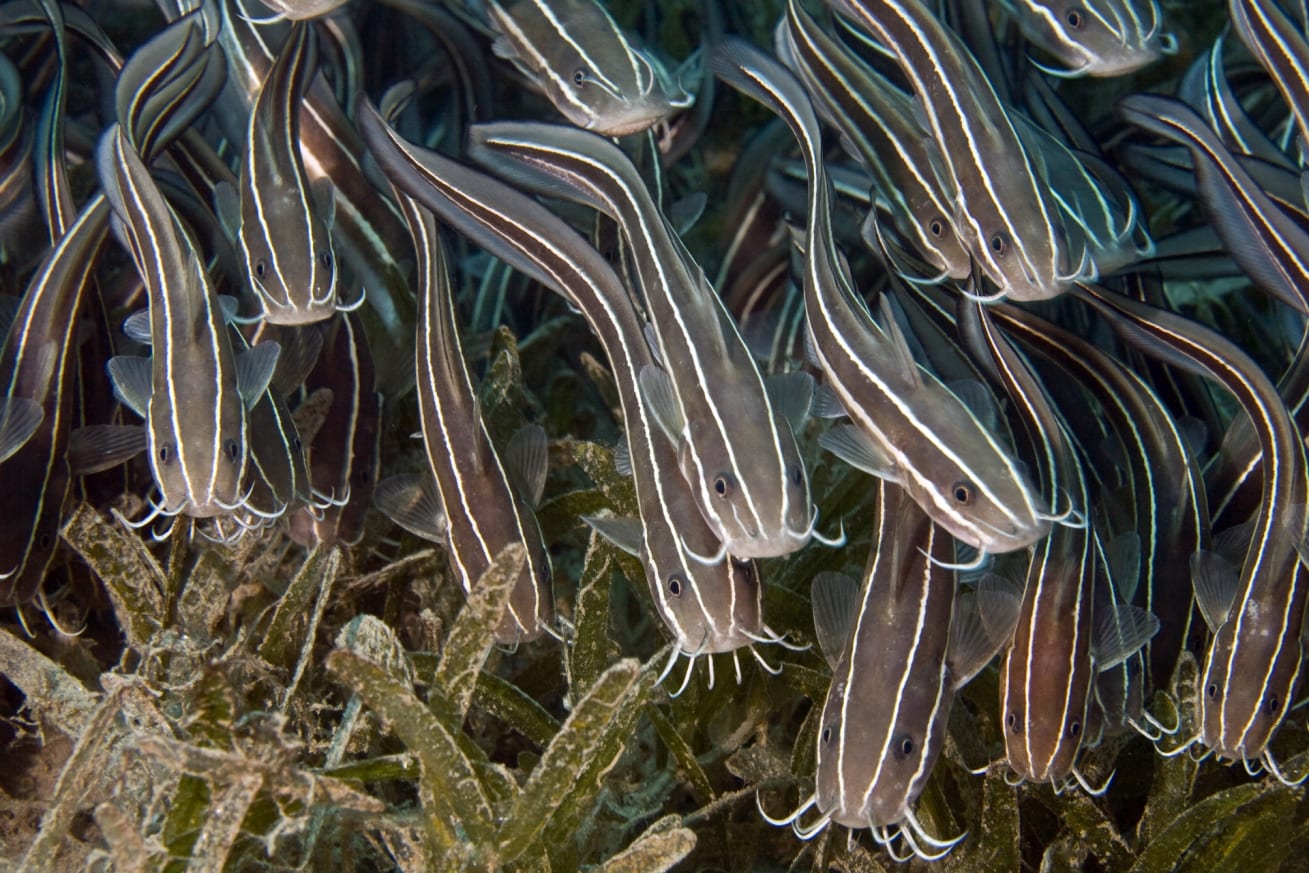 Listen to this article
•
15:34 min
Listen to this article
•
15:34 min
Floating orbs, neon colours, swirling tentacles: the creatures of the deep sea are a most fascinating lot. Whether you’re diving, snorkelling, or just walking on the beach, it’s best to admire the stunning world of marine life with your eyes only. Some of these ocean dwellers should definitely come with a ‘Do Not Touch’ warning. These are creatures that spew venom and emit deadly toxins to protect themselves from predators, attack prey, and sometimes, to fend off handsy humans. Keep an eye out for these toxin-generating creatures found around India’s coast.
Pufferfish
When face to face with a predator, these fish puff themselves up like a balloon. How? Pufferfish bellies are elastic, and they can quickly fill up on a huge amount of water and air, swelling up to several times their original size. Some species are even covered in spikes. Now this spiky, inflated ball would seem unpalatable to most predators, but the ones that do manage to get close are in for a nasty shock. Pufferfish are highly toxic, containing tetrodotoxin, which is lethally poisonous to other fish and humans as well.
Portuguese Man O’ War
Mumbai and Goa’s coasts often receive visits from a blue-tinged sea creature similar in appearance to a jellyfish. Curious as they may look, these purple blobs strewn across the sand are best observed from afar. The Portuguese man o’ war, also known as a blue bottle, is almost alien-like, made up of multiple organisms that function together as a cohesive unit. And this otherworldly animal has a deadly sting to match. Their flailing tentacles are their most dangerous feature — up to 30 feet long and covered in venomous cells. With these, they zap, immobilise, and even kill other marine creatures. Their toxic sting is immensely painful and harmful to humans as well, and they can sting even when out of water, so watch out for them on beach walks.
Lionfish
With a mane of spines around its eye-catching, striped body, the lionfish looks rather ornate, and equally dangerous. This is one case where looks are not deceiving. The needle-like dorsal fins of a lionfish are highly venomous, and a jab from the pointy end can be extremely unpleasant to humans, causing pain and nausea. Lionfish have spines on their fins, with venom glands containing toxins. A prick from these spines releases the toxin, effectively protecting the lionfish against predators of the sea and helping them hunt smaller prey.
Striped Eel Catfish
Catfish come in many shapes and sizes and can be found in diverse habitats, but the striped eel catfish is the only species found in coral reefs. They have slender, striped bodies and prominent whiskers, and carry around a rather dangerous arsenal. They have venomous spines on their dorsal and pectoral fins, from which a sting can result in nasty pain for humans. Juvenile striped eel catfish swim in swarming schools, while adults could be solitary or in smaller groups. Whether you come across one or many, it’s best to keep a safe distance.









